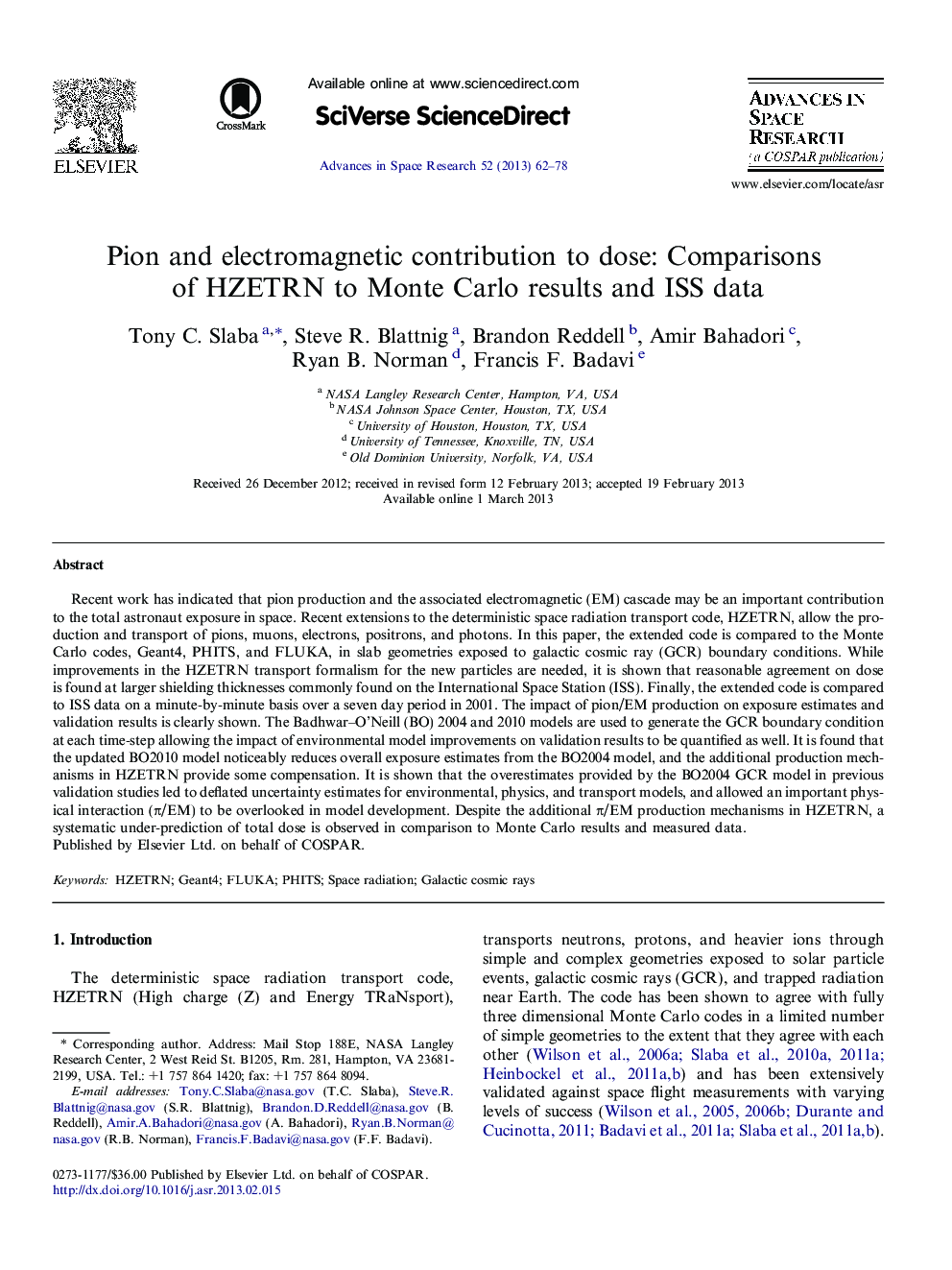| Article ID | Journal | Published Year | Pages | File Type |
|---|---|---|---|---|
| 1764225 | Advances in Space Research | 2013 | 17 Pages |
Abstract
Recent work has indicated that pion production and the associated electromagnetic (EM) cascade may be an important contribution to the total astronaut exposure in space. Recent extensions to the deterministic space radiation transport code, HZETRN, allow the production and transport of pions, muons, electrons, positrons, and photons. In this paper, the extended code is compared to the Monte Carlo codes, Geant4, PHITS, and FLUKA, in slab geometries exposed to galactic cosmic ray (GCR) boundary conditions. While improvements in the HZETRN transport formalism for the new particles are needed, it is shown that reasonable agreement on dose is found at larger shielding thicknesses commonly found on the International Space Station (ISS). Finally, the extended code is compared to ISS data on a minute-by-minute basis over a seven day period in 2001. The impact of pion/EM production on exposure estimates and validation results is clearly shown. The Badhwar-O'Neill (BO) 2004 and 2010 models are used to generate the GCR boundary condition at each time-step allowing the impact of environmental model improvements on validation results to be quantified as well. It is found that the updated BO2010 model noticeably reduces overall exposure estimates from the BO2004 model, and the additional production mechanisms in HZETRN provide some compensation. It is shown that the overestimates provided by the BO2004 GCR model in previous validation studies led to deflated uncertainty estimates for environmental, physics, and transport models, and allowed an important physical interaction (Ï/EM) to be overlooked in model development. Despite the additional Ï/EM production mechanisms in HZETRN, a systematic under-prediction of total dose is observed in comparison to Monte Carlo results and measured data.
Related Topics
Physical Sciences and Engineering
Earth and Planetary Sciences
Space and Planetary Science
Authors
Tony C. Slaba, Steve R. Blattnig, Brandon Reddell, Amir Bahadori, Ryan B. Norman, Francis F. Badavi,
